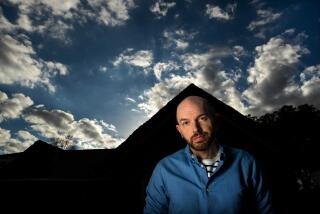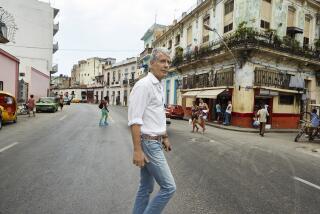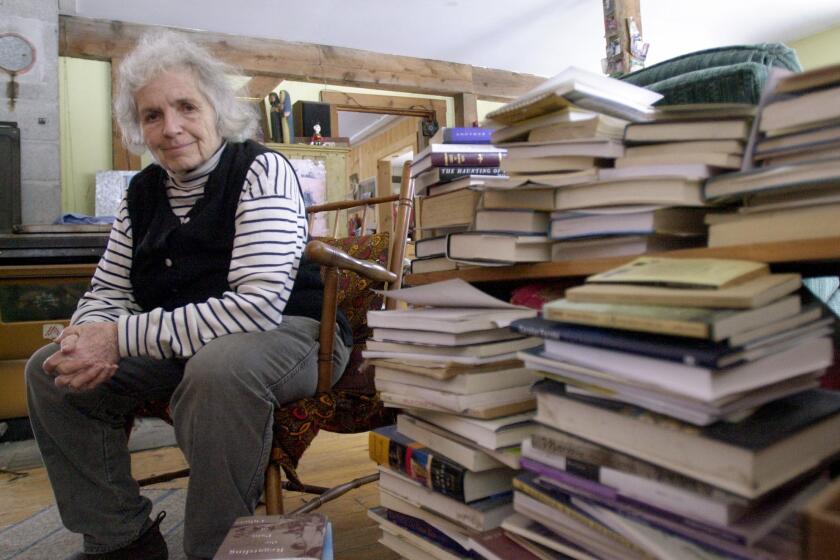The Cry for Change : Journalist makes things real and personal : THE COLLECTED WORKS OF JOHN REED, <i> Introduction by Robert A. Rosenstone (The Modern Library: $20; 937 pp.)</i>
He covered the three primal screams that launched this century. When the first great revolution broke out in Mexico, he rode with Pancho Villa. When the European system of order broke down in general war, he roamed the Balkans. When the Czar fell in what became the world’s first Communist revolution, he was busy making notes at the side of Lenin and Trotsky. He died a Red at age 33 in the fall of 1920, and was buried by the Kremlin wall. We’ve never quite known what to do with John Reed and for most of this century his books have been treated like dangerous explosives. “Insurgent Mexico,” his account of Villa and the Division of the North, was not published in Mexico until the early 1950s. “The War in Eastern Europe,” with its hostility to World War I, was buried alive. “Ten Days That Shook the World,” with its vivid portrayal of Trotsky, became an embarrassment under Stalin. He made things real to himself by taking them personally--a technique not recommended in journalism schools. A few day into his freshman year at Harvard he suggested to a fellow student that they write a book about the university. When his proposed colleagues pointed out their mutual ignorance, Reed replied, “Hell, we’ll find out doing the thing.” And that is pretty much the story of his short life.
Now in one fat Modern Library volume, Jack Reed and these three books (the Eastern European one with the full text for the first time) are back and it is easy to see what the fuss was all about. He was a great reporter. Wherever Reed ventured, he took his readers with him:
“It was while Villa was in Chihuahua City . . . that the artillery corps of his army decided to present him with a gold medal for personal heroism on the field. . . .
“Villa looked at the medal, scratching his head, and, in a reverent silence, said clearly: “This is a hell of a little thing to give a man for all that heroism you are talking about! . . . Puckering up his face, as he always did when he concentrated intensely, he leaned across the table in front of him and poured out, in a voice so that people could hardly hear: ‘There is no word to speak. All I can say is my heart is all to you.’ ”
Reed was born in Portland, Ore. His family was upper-class, his father dedicated to progressive politics. He graduated from Harvard in the celebrated class of 1910 that also contained Walter Lippmann and T. S. Eliot. By 1913, he was the bohemian wonder of Greenwich Village and had already been jailed while covering the great textile strike in Paterson, N.J. In December of 1913 he crossed into Mexico, emerged in April, 1914, and had a book in press by that July. He was famous and on his way to real money (Metropolitan magazine paid him $500 a week) when in the fall of 1914 he was shipped into the carnage of World War I. By 1915 he was wandering the hellish Eastern Front, and after imprisonment by the Czar’s agents came away with a book and the sense that violent change was impending in Russia’s ancient autocracy. Back in the states, he watched the nation lurch into the war, and was tried twice for sedition.
By September of 1917, he was in St. Petersburg where he made notes day and night until January of 1918. He came home and had all his notes and documents seized by federal agents as possibly seditious. During this lull he helped organize an American Communist Party. Upon recovering his research materials, he wrote “Ten Days That Shook the World.” By October, 1920, he was dead of typhus in Moscow--possibly disillusioned with the revolution and possibly not (Reed, like a famous atheist, has prompted a deep hunger among some for a deathbed recantation). Somewhere in this hurly-burly, he ran with the likes of Eugene O’Neill and the Provincetown Players, enjoyed insulting Theodore Roosevelt to his face, flashed across famous salons such as Mable Dodge Luhan’s, had a stormy marriage to journalist Louise Bryant, popped into the White House for chats with President Woodrow Wilson, and carried on a full load of love affairs. He died of typhus in Moscow, and his contemporaries spent the rest of their lives remembering him as either the golden boy who went bad, or simply as their image of the golden promise of every youth.
Jack Reed stumble into my life when I walked across 150 miles of desert and made a dry camp 40 miles from a town while I spent a day under the frail shade of an ironwood tree with a paperback edition of “Insurgent Mexico.” When I opened the book I knew him dimly as someone famous long ago. When I finished, the bloody decades that separated me from the Mexican Revolution had fallen away and Francisco Villa seemed much closer than the next water hole. It is this immediacy, eye for detail and breath of passion that has made scholars cold to Reed and yet, when you scan their footnotes, he always shows up. Richard Pipes in his magisterial history of the Russian Revolution dismisses Reed sharply: “He was as ignorant of Russia’s past as he was of her language, nor did he know anything about socialism.” Then grudgingly he admits that Reed’s account “more than any other contributed to making foreigners look at the Russian Revolution as a great romantic adventure.”
Considering the haste and pressure Reed worked under, his errors of judgment and fact are not surprising. What the reader remembers is visiting three horror shows. Reed slipped the leashes of journalism and became our witness to the slaughters that launched this century. Sometimes his seat-of-the-pants impressions sound eerily like today. Take St. Petersburg (then Petrograd) in September and October of 1917:
“In all the barracks meetings every night, and all day long interminable hot arguments. On the streets the crowds thickened toward gloomy evening, pouring in slow voluble tides up and down the Nevsky, fighting for the newspapers. . . . Hold-ups increased to such an extent that it was dangerous to walk down side streets. . . . On Sadovaya one afternoon I saw a crowd of several hundred people beat and trample to death a soldier caught stealing. . . . Mysterious individuals circulated among the shivering women who waited in queue long cold hours for bread and milk, whispering that the Jews had cornered the food supply. . . .
“Gambling clubs functioned hectically from dusk to dawn, with champagne flowing and stakes of twenty thousand rubles. In the center of the city at night prostitutes in jewels and expensive furs walked up and down, crowded the cafes. . . .
“Monarchist plots, German spies, smugglers hatching schemes. . . .
“And in the rain, the bitter chill, the great throbbing city under grey skies rushing faster and faster toward--what?”
Crack open “The War in Eastern Europe,” and it seems like a bulletin fresh off the AP wire:
“Here the river widened out and poured thunderously over an immense dam; and looking down, we could see the clear water running above a mass of sodden cloth and bodies bloated gray--from the falls themselves a bone stuck straight out, with stings of flesh and pieces of clothing waving the current.”
In 1919, he ran into his mentor, the muckraker Lincoln Steffens, under a New York street lamp. Steffens was cold to Reed’s passion for revolution and had warned him that his politics would ruin his poetry. That night Reed snapped, “Why don’t you join us? We are trying to do what you used to talk and write about.” As this century ends, not with T. S. Eliot’s bang or a whimper but in a global groan, John Reed’s three books return to haunt us. We seem to have learned very little that Reed did not know. Except, perhaps, to give up hope, a decision I think Reed would have seen as fatal and un-American. He thought the world could be made better. Imagine that.
More to Read
Sign up for our Book Club newsletter
Get the latest news, events and more from the Los Angeles Times Book Club, and help us get L.A. reading and talking.
You may occasionally receive promotional content from the Los Angeles Times.






